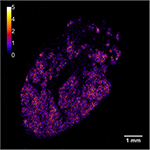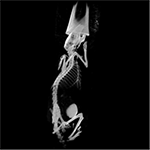Research Projects
Structure and Organization
The Technology and Research Development under CGRI is organized into three projects:
TR&D PROJECT I. GAMMA-RAY DETECTORS AND IMAGING SYSTEMS
The overall goal of TR&D Project I is to develop a wide variety of  detector technologies, providing the flexibility needed to design imaging systems in response to specific biomedical problems under investigation in our laboratory or by our collaborators.
detector technologies, providing the flexibility needed to design imaging systems in response to specific biomedical problems under investigation in our laboratory or by our collaborators.
By exploiting commonalities, we are developing new detector technologies applicable not only to gamma-ray imaging but also to transmission x-ray imaging and to the charged particles emitted by radionuclides.
TR&D PROJECT II. IMAGE SCIENCE AND IMAGE QUALITY
The overall goal of TR&D Project II is to extend the practical methods for computing objective measures of image quality rapidly and to use these methods to quantify task performance for CGRI imaging systems and those of our collaborators using realistic, dynamic object models.

TR&D PROJECT III. ADAPTIVE AND MULTIMODALITY IMAGING
The overall goals of TR&D Project IV are to advance significantly the state of the art in adaptive imaging by incorporating mathematical models and advances in photon processing into our adaption strategies.
COLLABORATIVE PROJECTS
The Center for Gamma-Ray Imaging (CGRI) engages in an extensive program of collaborative research with internal (within the University of Arizona) and external investigators. Our collaborators generally have independent NIH research support or are in the process of gathering preliminary data for future grant submissions. Our role varies between projects. In some cases, the collaborators are biomedical researchers for whom we provide access to imaging technology for a specific study. In other cases, our contribution is to actually transfer hardware, or designs for hardware, to the collaborating institution for incorporation into their own programs. A training component, in which we transfer knowledge of how to operate systems and software, is included in every collaborative project. There is also a reciprocal transfer of know-how and/or tangibles back to the Center.
RESEARCH HIGHLIGHTS
Through a remarkable confluence of new concepts, rigorous theory and recent technological advances at CGRI and elsewhere, we are now beginning to develop a whole new class of imaging systems, with applications in nuclear medicine, digital radiography and computed tomography, and even in optical and quantum-optical imaging. These systems are characterized by the use of detectors with multiple output signals for each interacting photon and by the use of those signals for real-time maximum-likelihood estimation of photon attributes, such as the three-dimensional coordinates of the photon’s interaction in the detector; the energy deposited in that interaction, and the time it occurred. These attributes are estimated to arbitrary precision, floating point if desired, so the concept of detector pixels is no longer relevant if the data are stored properly in a list of estimated attributes.
Then, because the imaging system yields a high-dimensional function of continuous variables rather that a discrete array of numbers, it becomes necessary to reexamine some fundamental concepts in image theory, such as null functions and estimability. It is no longer obvious that all digital imaging systems must have ‘blind spots,’ portions of the object Hilbert space where the system can collect no information at all. Moreover, concepts such as task-based assessment of image quality and the ideal observer must receive fresh scrutiny.

